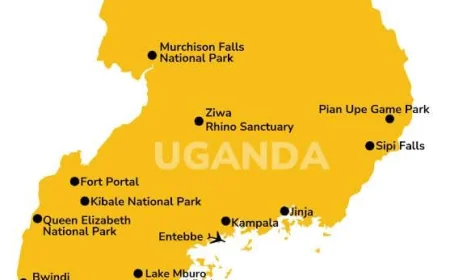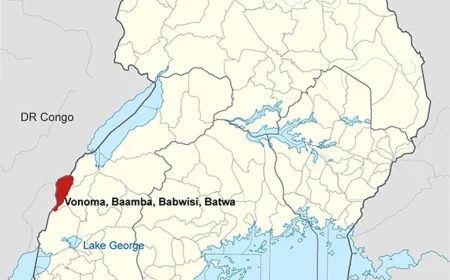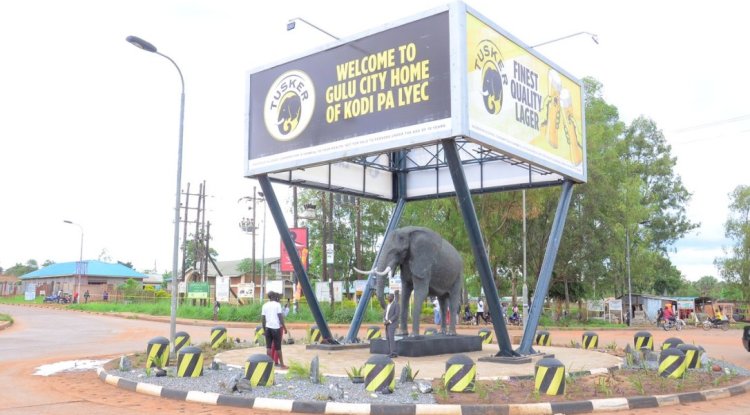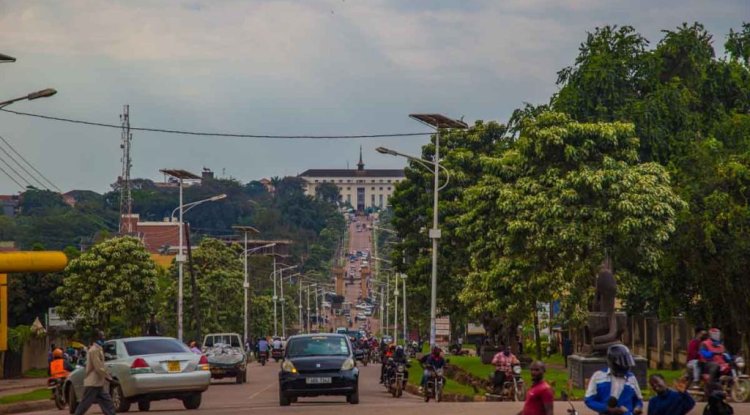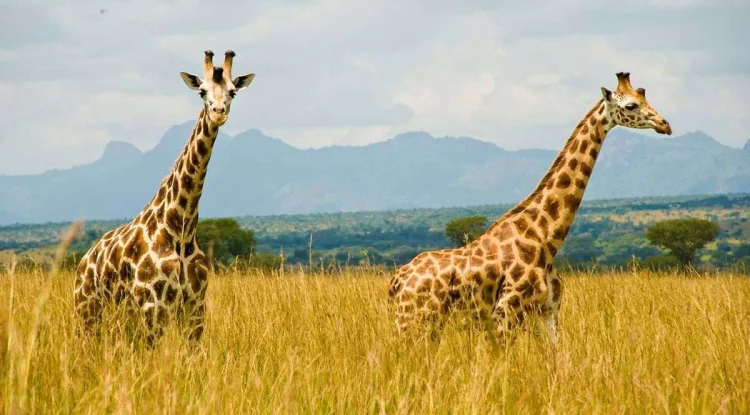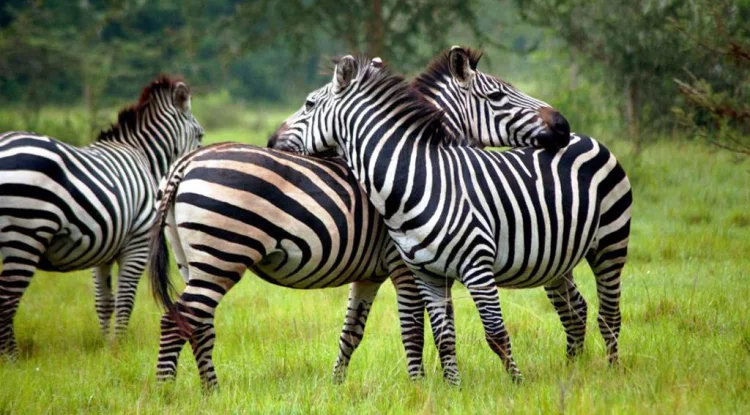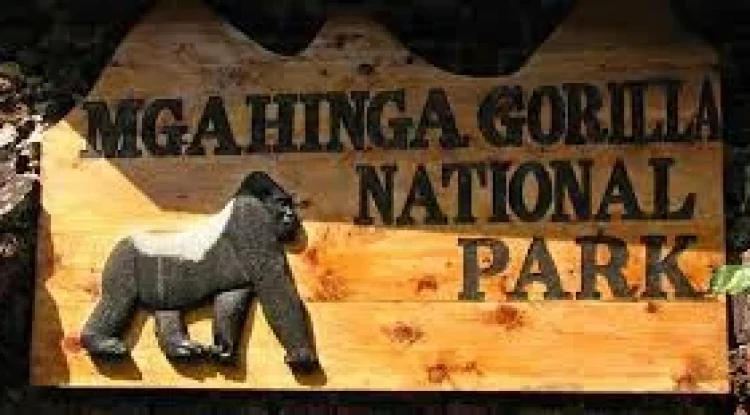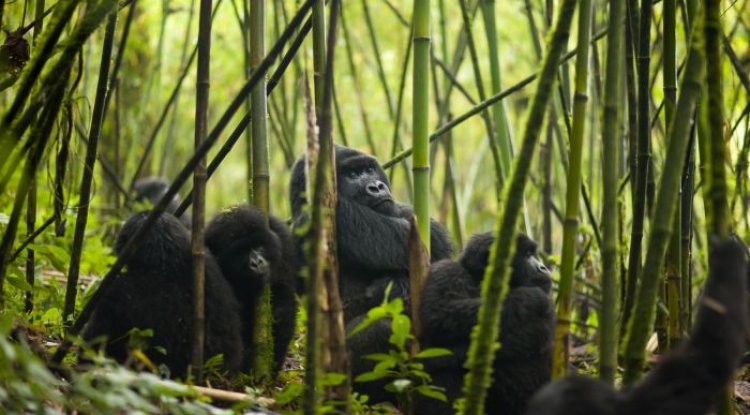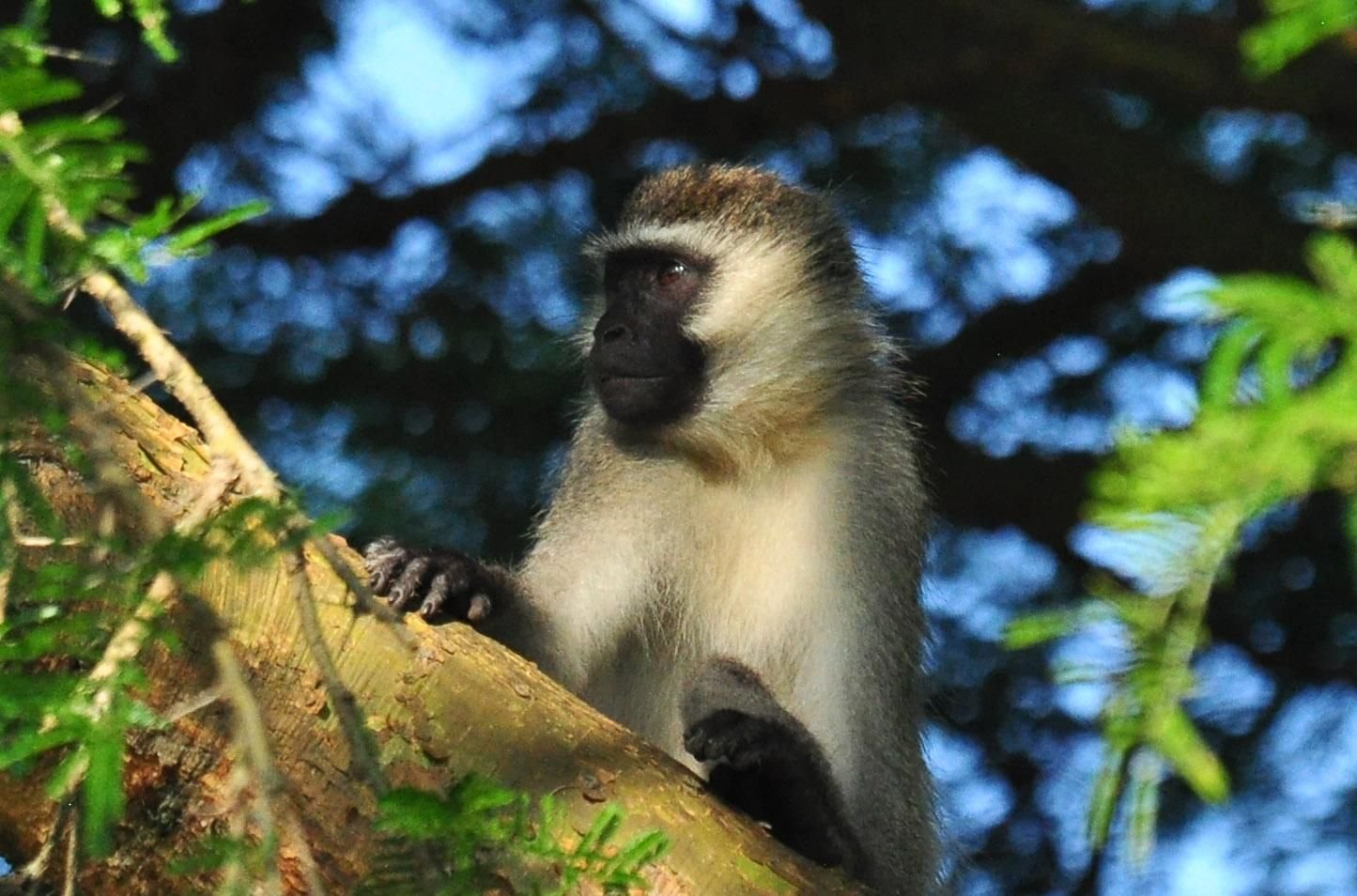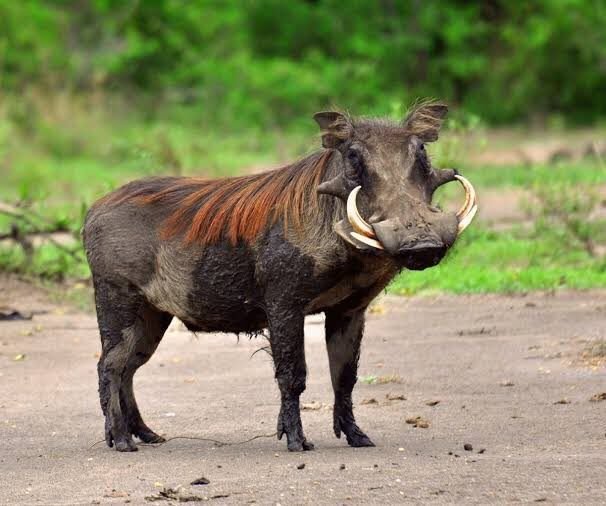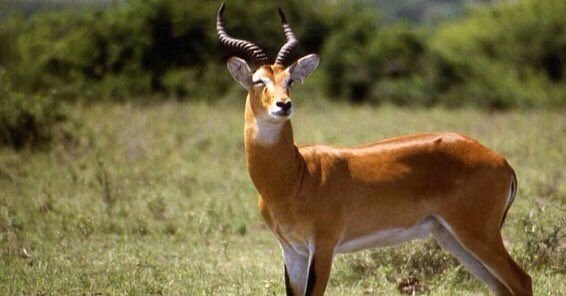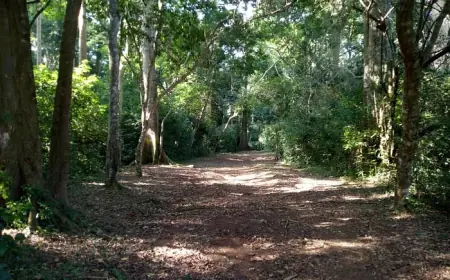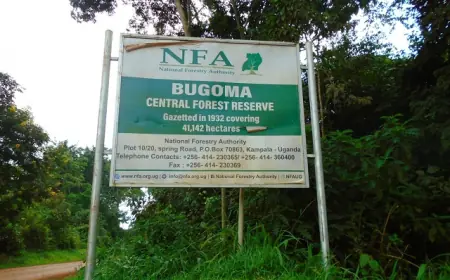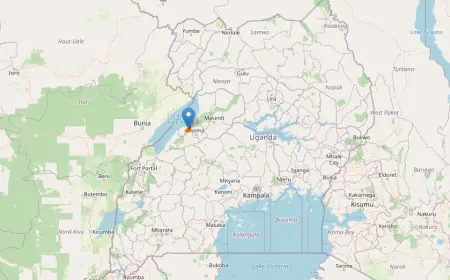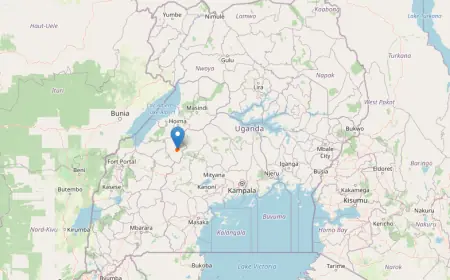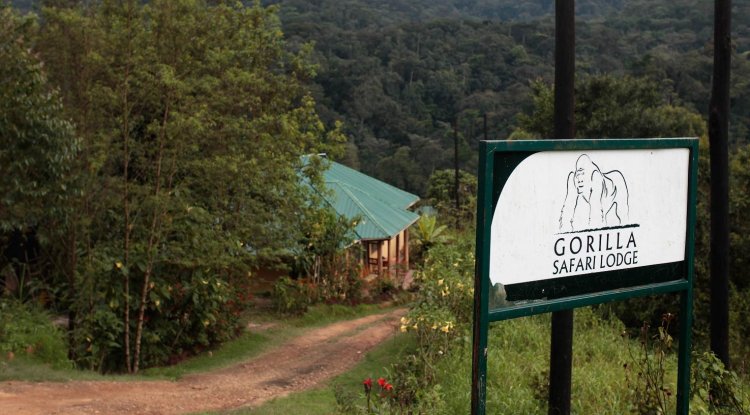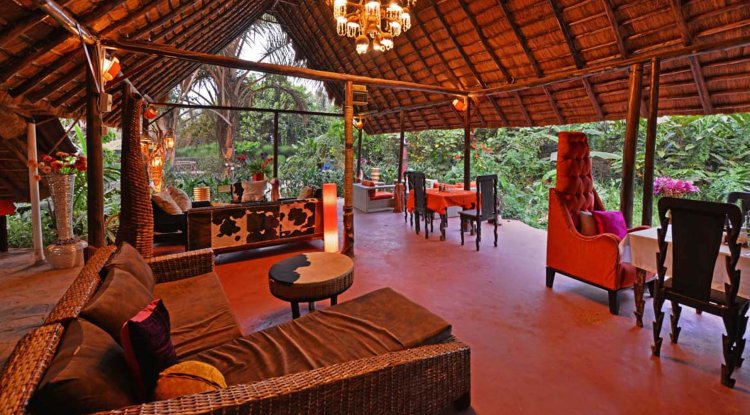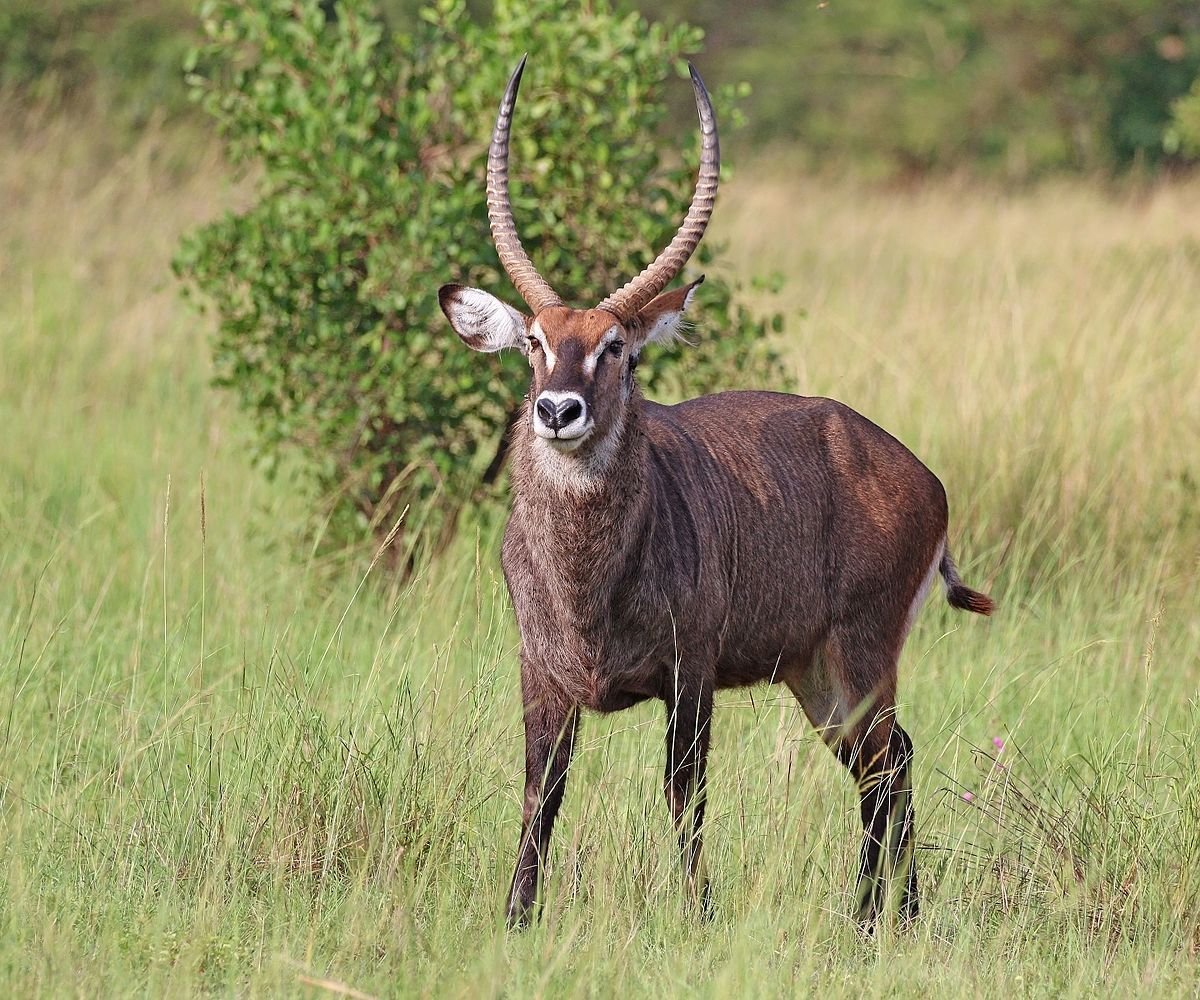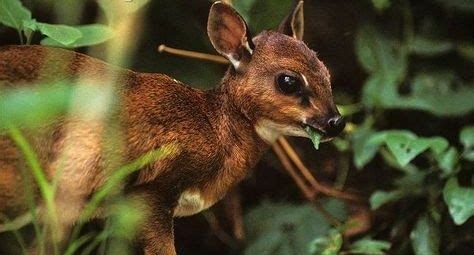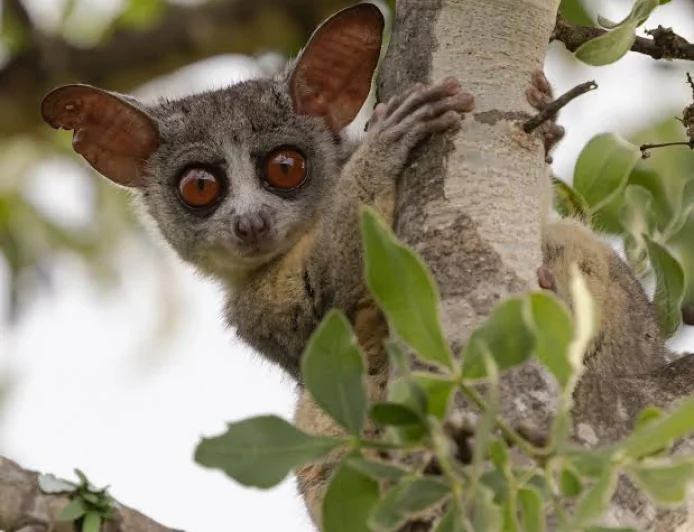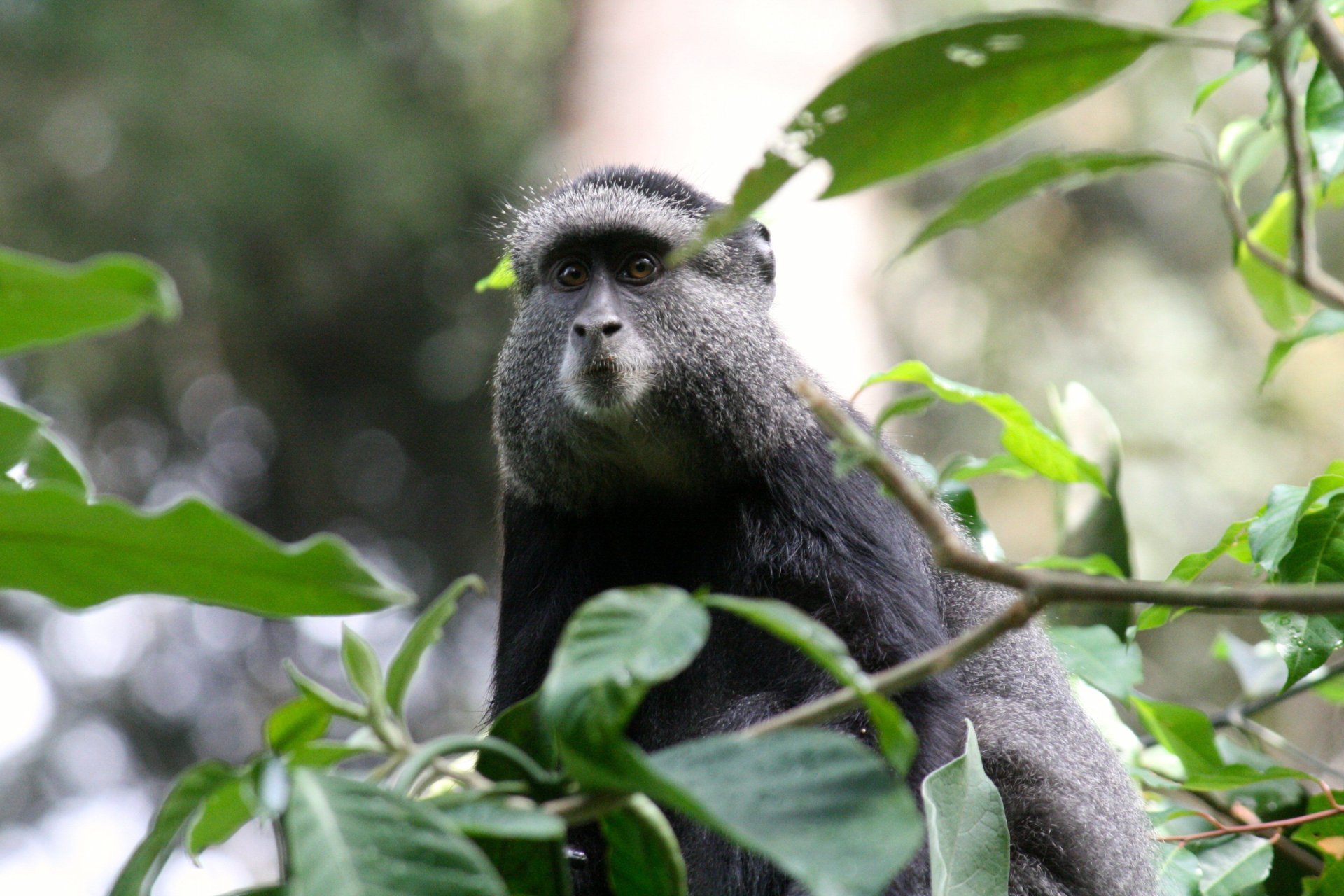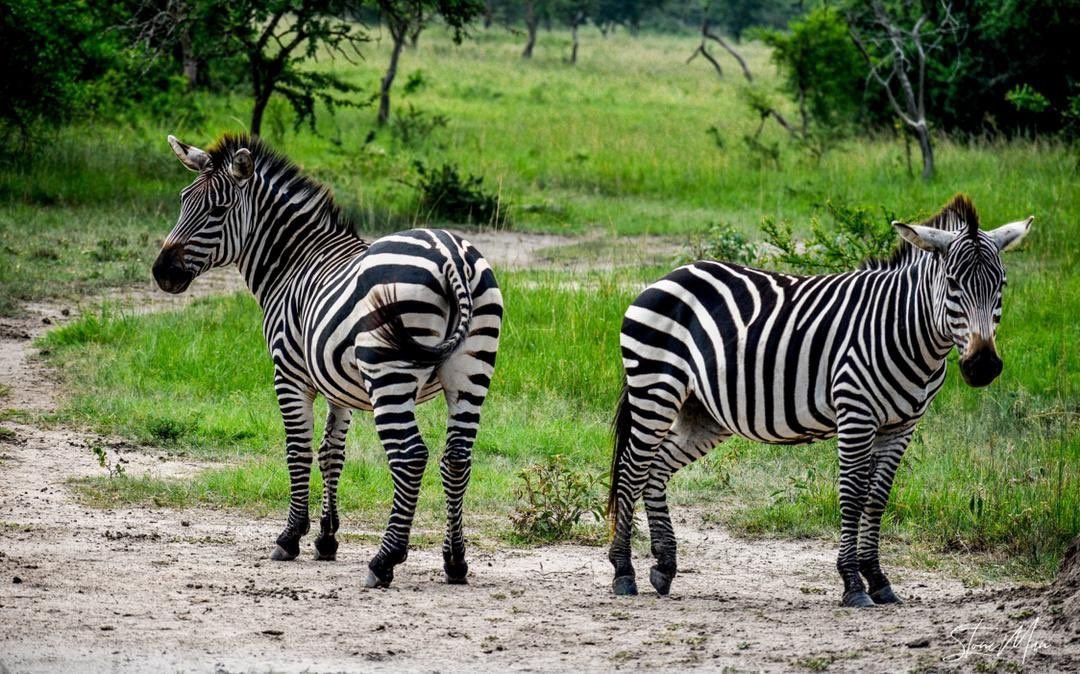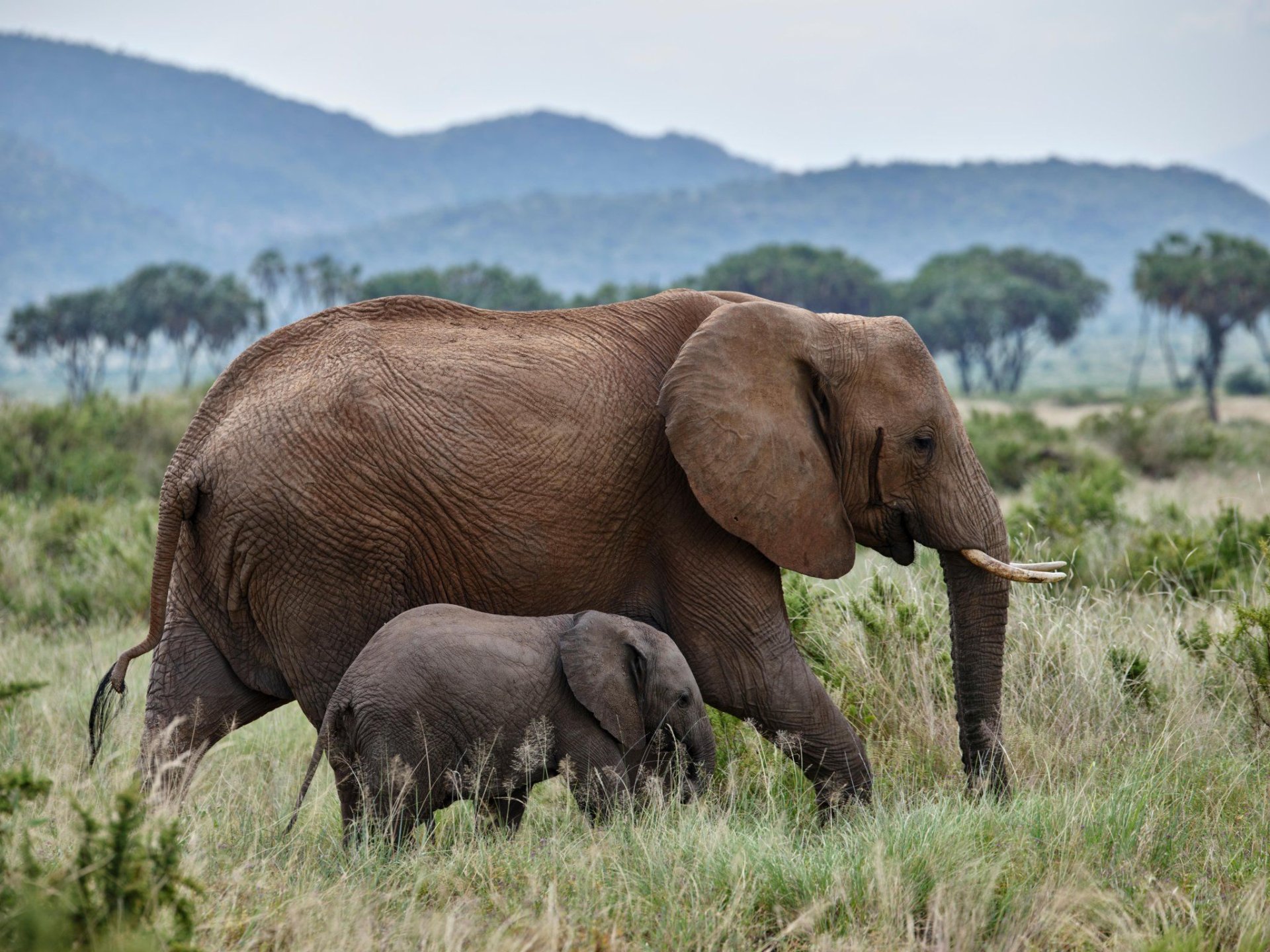African hunting dog (Lycaon pictus)
The long-legged African wild dog (Lycaon pictus) has large bat-like ears and a mottled, irregular coat with patches of red, yellow, brown, black, and white fur. It also goes by the names "painted dog" and "African hunting dog." Each dog has a distinct coat pattern, and their tail tips are all white.
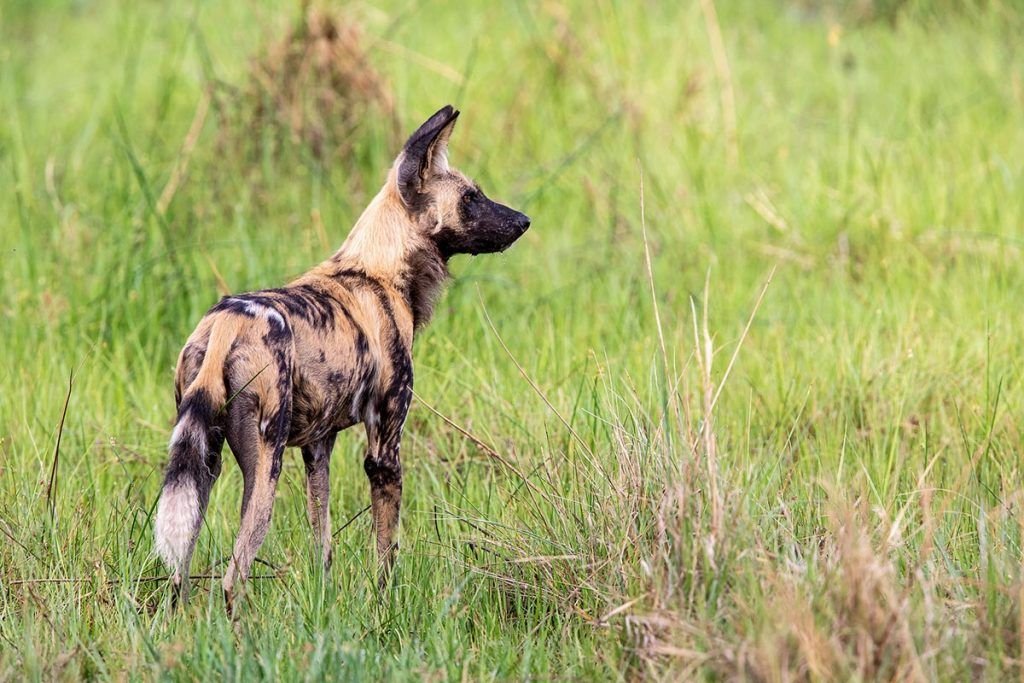
The sub-Saharan African wild dog (Lycaon pictus), also known as the painted dog or painted wolf, and the Cape hunting dog, is a wild canine. The only extant member of the genus Lycaon, which differs from Canis by having a highly specialised dentition for a hypercarnivorous diet and by lacking dewclaws, is the largest wild dog in Africa.
The species specialises in chasing antelopes until they become exhausted in order to capture them. Lions and spotted hyenas are its natural adversaries; the former will attempt to kill the dogs, while hyenas frequently serve as kleptoparasites.
The African wild dog, like other canids, regurgitates food for its pups, but it also does so for adults as a crucial aspect of the social life of the pack. First access to the carcasses is given to the infants.
The African wild dog is the continent's biggest and most robustly built canid. In general, females are 3-7% smaller than males. The African wild dog is tall and relatively lean in comparison to other members of the Canis genus. It also lacks dewclaws and has oversized ears.
The African wild dog's fur is entirely made up of stiff bristle-hairs without any underfur, which makes it significantly different from the fur of other canids. As it ages, its fur gradually falls out, leaving older individuals nearly hairless.
How the African wild dog behaves
The African wild dog has much stronger social ties than sympatric lions and spotted hyenas, making solitary living and hunting very unusual. It resides in yearling pups and two to 27 adults in permanent packs.
Male and female dominance hierarchies are different from one another, with the oldest female typically at the top of the female hierarchy. Males may follow the oldest males as pack leaders, but these can be replaced by younger individuals. As a result, some packs may contain older males who were once pack leaders. Breeding usually occurs only in the dominant pair. Males in the species stay with the natal pack, unlike the majority of other social species, while females disperse (a pattern shared by other primates like gorillas, chimpanzees, and red colobus). In addition, males typically outnumber females in a pack by a ratio of 3:1.
African wild dog reproduction
Populations of African wild dogs in East Africa don't seem to have a set breeding season. A single male stays close to the female during estrus to keep other members of the same sex at bay.
The gestation period lasts 69–73 days, with a typical gap of 12–14 months between pregnancies. The African wild dog has the highest litter size of any canid, with an average of ten pups per litter, indicating that a single female can give birth to enough pups each year to start a new pack. Breeding is strictly limited to the dominant female, which may kill the pups of subordinates, as the amount of food required to feed more than two litters would be impossible for the average pack to obtain. While the rest of the pack goes hunting, the mother stays in the den with the pups after giving birth.
When other pack members approach the pups, she usually drives them away until the puppies are three to four weeks old and able to eat solid food. Around three weeks old, the pups are weaned outside and leave the den. At five weeks old, the pups are weaned, and the other pack members feed them regurgitated meat. The pups' legs, muzzles, and ears have clearly grown longer by the time they are seven weeks old, and they start to resemble adults. When the puppies are eight to ten weeks old, the pack leaves the den, and the young pups accompany the adults on hunts. When a kill occurs, the youngest pack members are allowed to eat first; however, this privilege ends once they turn one year old.
African wild dogs' diet
The majority of the medium-sized antelope that the African hunting dog hunts are impala, greater kudu, Thomson's gazelle, and wildebeest.
The wild dog, on the other hand, weighs 20–30 kg. However, its prey weighs an average of 50 kilograms and can weigh up to 200 kilograms.
Larger animals like the common eland and the African buffalo are chased by African wild dogs, but these animals are rarely killed by them.
In some regions, small antelope like duiker, dik-dik, steenbok, and warthogs serve as important prey for wild dogs.
Although eggs, lizards, and other small prey items are taken by African Wild Dogs, they make up a very small portion of their diet.
Where in Uganda can I see African hunting dogs?
In about half of the nations where it once lived, including Uganda, the African hunting dog has gone extinct. Since hunting dogs are excellent explorers, recolonization is unlikely but not impossible. Thankfully, there are still small populations in parts of western Kenya and Tanzania.
Unreliable reports of sightings of the African hunting dog have been made near Uganda's Kidepo Valley National Park. Southern Sudan, northern Kenya, and northeastern Uganda are the species' distributional ranges.
The African wild dog lived in Queen Elizabeth National Park and the nearby Virunga National Park in the 1940s and 1950s, but local authorities at the time had the policy of killing the wild dogs as vermin. As a result, the species disappeared from the Greater Virunga Landscape.
What's Your Reaction?
 Like
0
Like
0
 Dislike
0
Dislike
0
 Love
0
Love
0
 Funny
0
Funny
0
 Angry
0
Angry
0
 Sad
0
Sad
0
 Wow
0
Wow
0
